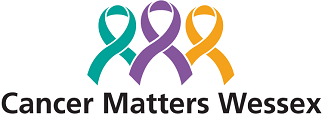Breast screening
About 1 in 8 women in the UK are diagnosed with breast cancer during their lifetime. If it’s detected early, treatment is more successful and there’s a good chance of recovery.
Breast screening aims to find breast cancers early.
WHO?
Women aged 50 to 70 are invited for breast screening every 3 years.
You’ll automatically get your first invite for breast screening between the ages of 50 and 53. You will then be invited every 3 years until you turn 71.
Though you will stop being invited after 71, if you are still at risk of breast cancer you can continue to have breast screening every 3 years by asking for an appointment at your local breast screening unit.
If you are a trans man, trans woman or are non-binary, you will be invited if you are registered as female with at a GP. If not, you may need to talk to your GP surgery or call your local breast screening service to ask for an appointment.
WHY?
Screening can help to identify cancer earlier than it would have been without screening.
Most experts agree that regular breast screening is beneficial in identifying breast cancer early.
It does not prevent you from getting breast cancer, but the earlier the condition is found, the more likely treatment will be successful.
You are less likely to need a mastectomy (breast removal) or chemotherapy if breast cancer is detected at an early stage.
HOW?
Breast screening uses an X-ray test called a mammogram to check the breast for signs of cancer. It can spot cancers that are too small to see or feel.
You will be given somewhere private to undress to the waist. It may be easier to wear a skirt or trousers instead of a dress.
The mammographer will first explain what will happen. She will then place each breast in turn onto the mammogram machine and lower a plastic plate onto it to flatten it. This helps to keep the breast still and get clear X-rays.
The mammographer will usually take two X-rays of each breast — one from above and one from the side. She will go behind a screen while the X-rays are taken. You have to keep still for several seconds each time.
The mammogram only takes a few minutes, and the whole appointment takes less than half an hour.
Having a mammogram can be uncomfortable, and some women find it painful. You are in control – if you find the process too painful then you should tell the mammographer. Usually, any discomfort passes quickly.
WHEN?
You will be called for screening every 3 years. If you are not sure if you have missed your invitation, ask at your GP practice.
Your local breast screening centre will send you a letter offering you an appointment to attend for screening.
If you cannot attend the appointment time you have been given, you can ring and ask to change it. Some screening centres may be able to offer an alternative venue if that is more convenient.
WHERE?
Depending on where you live, your appointment will take place either at a hospital, or at one of the mobile units you may see parked outside GP surgeries or community centres.
WHAT NEXT?
After your breasts have been X-rayed, the mammogram will be checked for any abnormalities.
Your screening results will be sent to you in the post within 2 weeks of the appointment. They are also sent to your GP.
There are 3 types of result:
Normal Result: in about 96 out of every 100 women screened, the mammogram will show no sign of cancer. You will be invited to screening again in 3 years. Remember that cancer can still develop between mammograms, so , in the meantime, tell your GP straight away if you notice any changes in your breasts.
Unclear result: this is nothing to worry about. Sometimes technical problems mean that the mammogram is not clear enough to read, so occasionally you could need another mammogram.
Abnormal Results: about 4 in every 100 women are asked to come back for more tests after screening. Out of these 4 women, 1 will be found to have cancer and will go on to have treatment. The rest will not have cancer and will go back to having screening invitations every 3 years.
Further tests may include a breast examination, more mammograms and ultrasound scans.
You may also have a biopsy, which is when a small sample is taken from the breast with a needle and checked under a microscope . You will usually get your results within a week.
